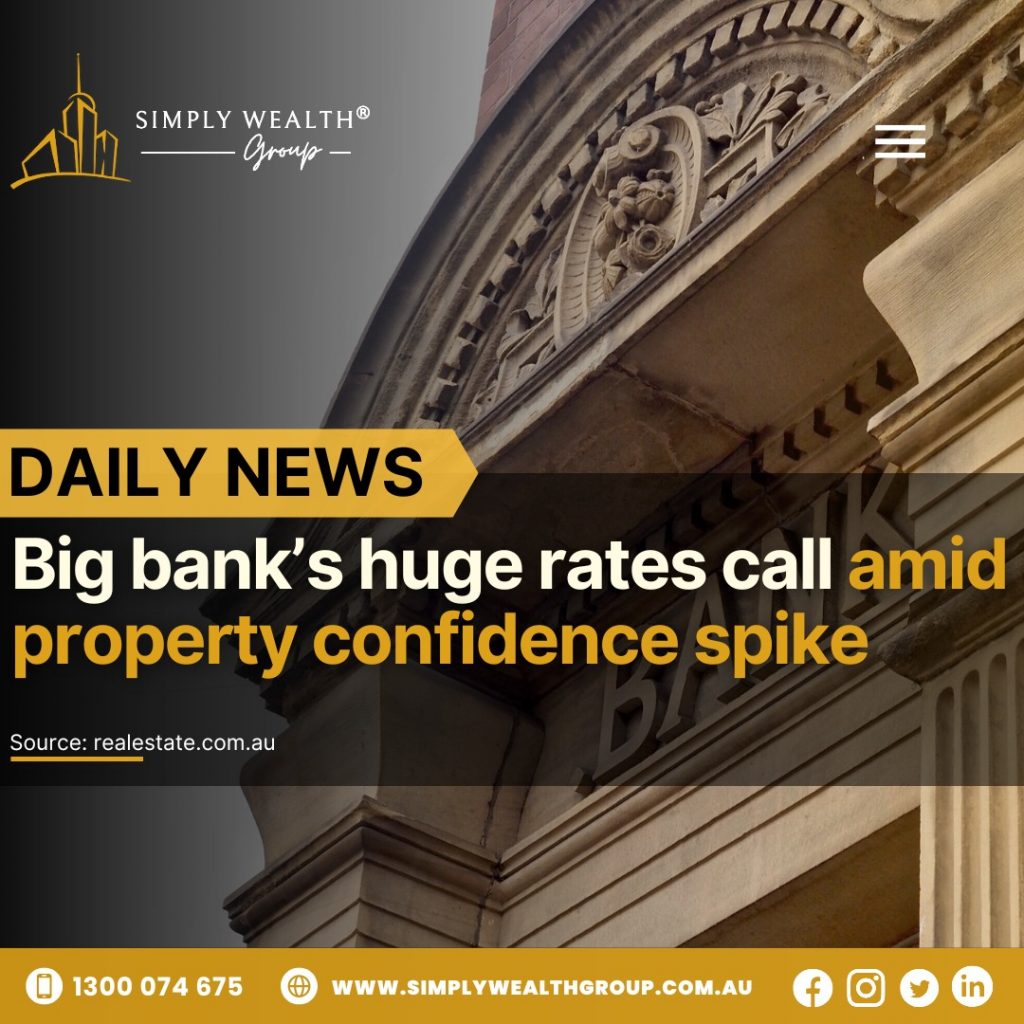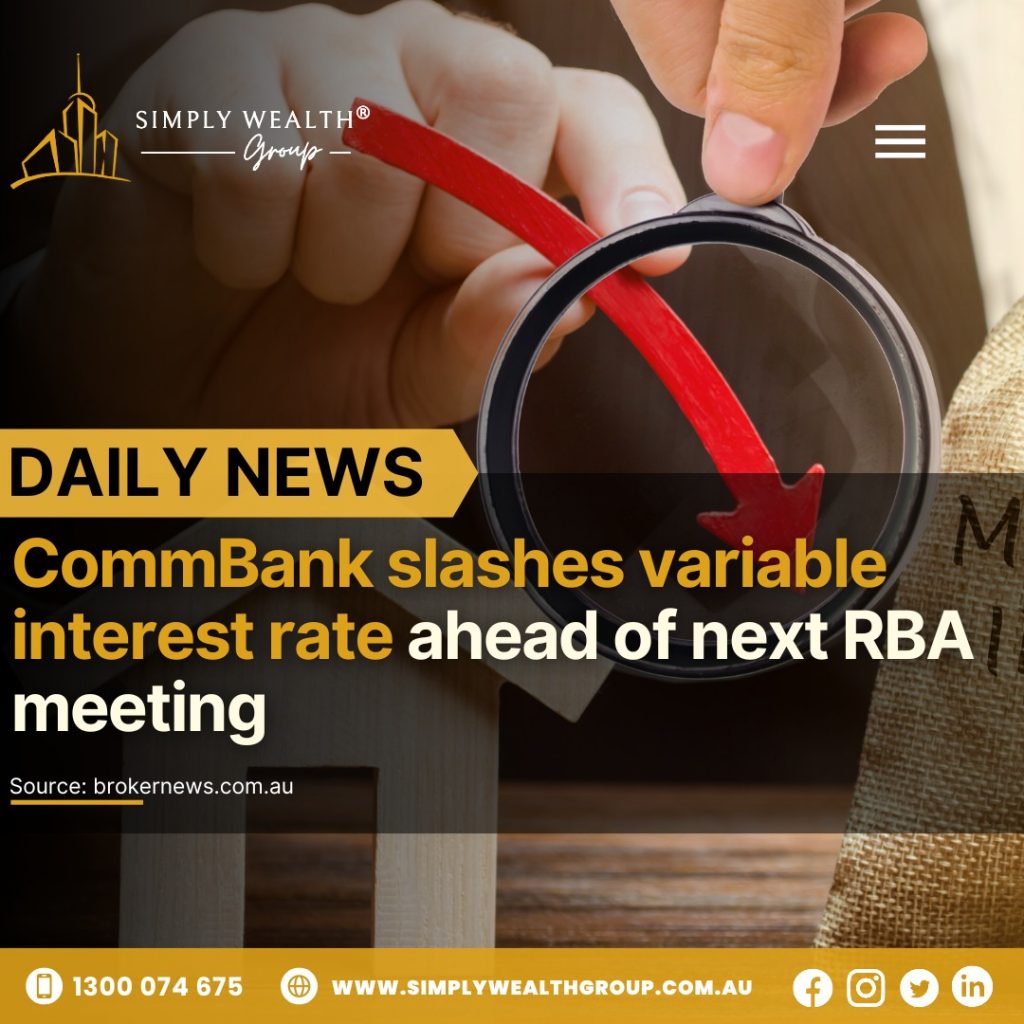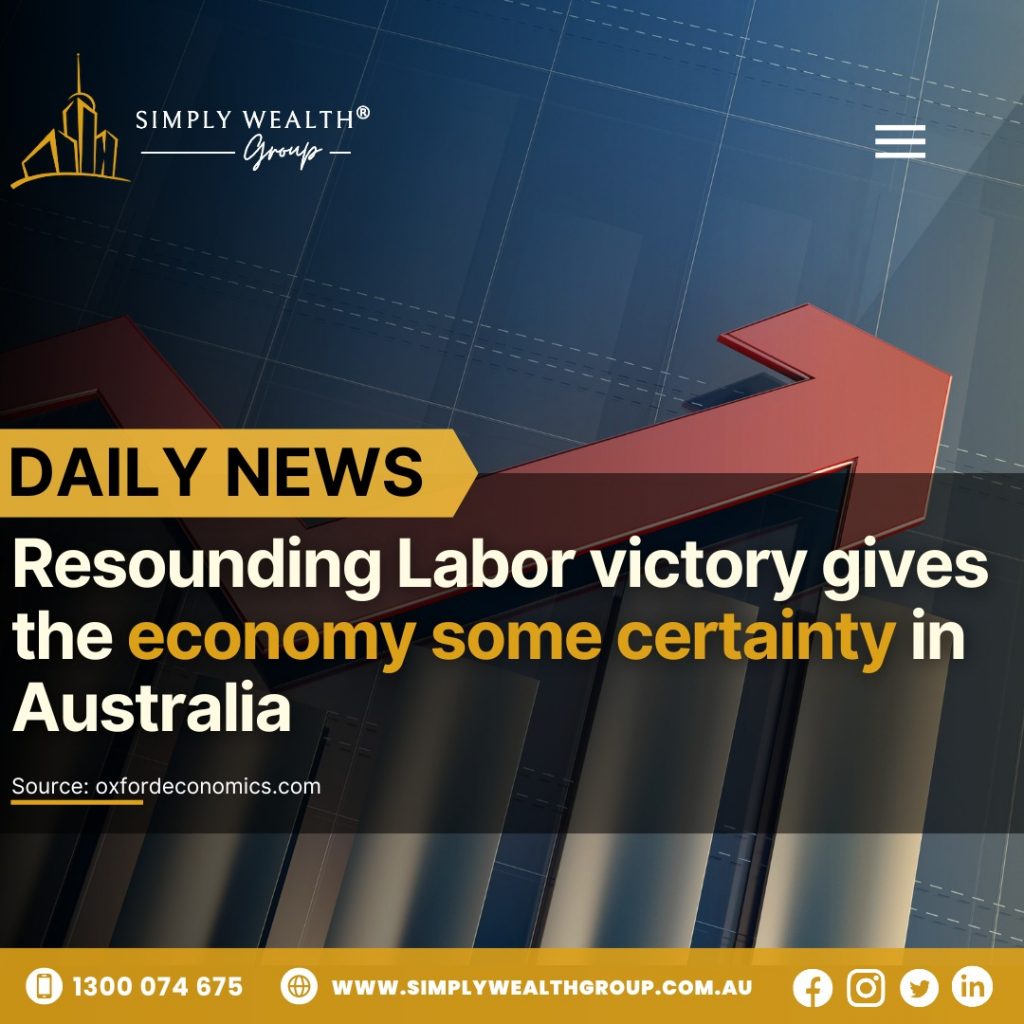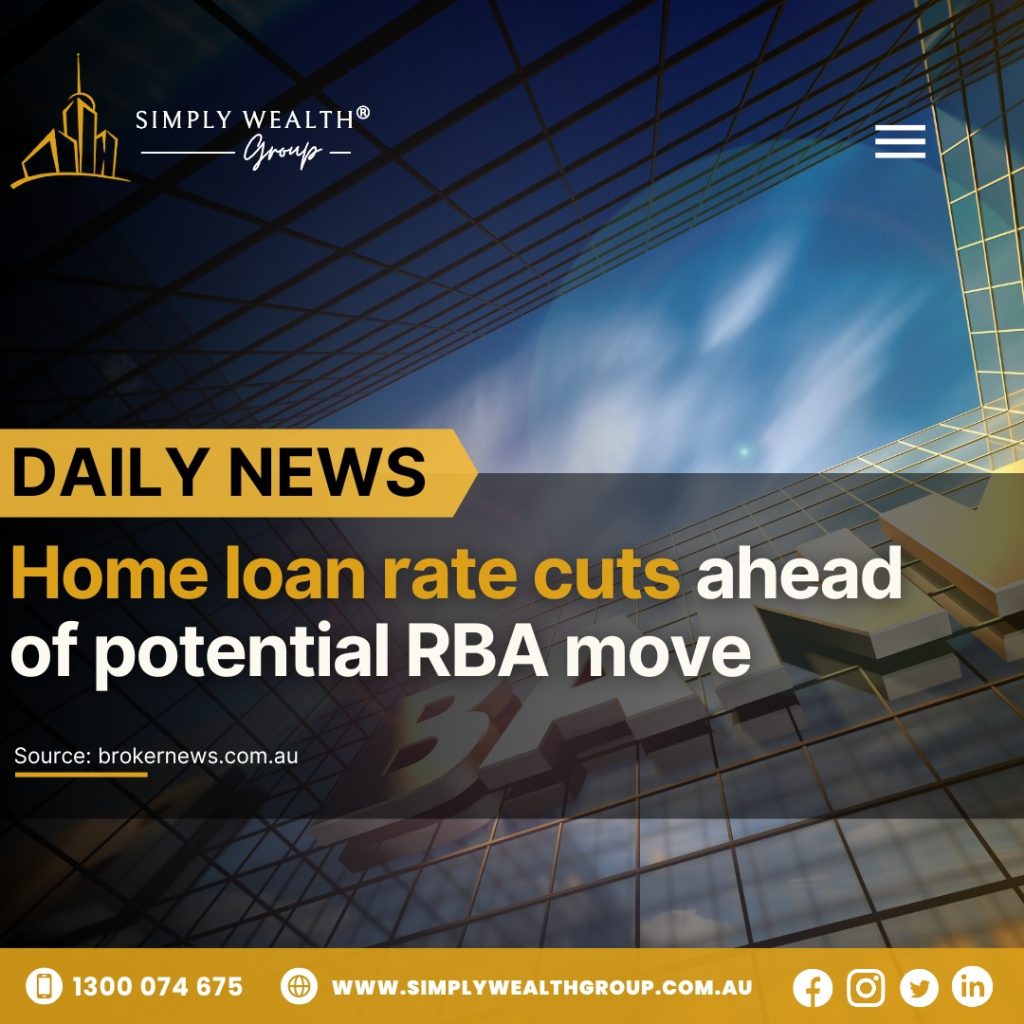𝐍𝐄𝐖𝐒 𝐀𝐋𝐄𝐑𝐓: 𝐇𝐨𝐮𝐬𝐢𝐧𝐠 𝐕𝐚𝐥𝐮𝐞𝐬 𝐑𝐢𝐬𝐞 𝐀𝐠𝐚𝐢𝐧 — 𝐁𝐮𝐭 𝐑𝐚𝐭𝐞 & 𝐈𝐧𝐜𝐨𝐦𝐞 𝐏𝐫𝐞𝐬𝐬𝐮𝐫𝐞𝐬 𝐂𝐮𝐫𝐛 𝐌𝐨𝐦𝐞𝐧𝐭𝐮𝐦

Australia’s property market is showing renewed strength, with home values ticking up again across many areas. However, rising interest rates and household income pressures are starting to temper how fast values can climb — making now a mixed but important moment for buyers, sellers, and investors. Key Highlights: Housing values on average have recorded another lift, signifying stable demand and underlying confidence. But affordability concerns — due to higher borrowing costs and cost-of-living pressures — are acting as a brake on how fast prices can rise. Many buyers and investors are becoming more cautious: while demand remains, the expectation of price surges has softened. What This Means: Buyers & First-Home Buyers: There’s still opportunity to enter the market — prices are rising, but not so fast that affordability is out of reach. However, you’ll want to get finance sorted and lock in budgets carefully given rate pressures. Sellers: Demand remains, but don’t expect runaway bidding wars as before. Well-priced properties in good areas will still attract interest, but price growth may be more moderate. Investors: With values rising but growth dampened, yield and long-term capital growth play a bigger role. Focus on properties with strong rental demand or value-add potential. The property market remains alive — but it’s evolving. If you’re thinking about buying, selling, or investing, this may be a good time to review your strategy carefully. Read more: https://www.mpamag.com/…/housing-values-rise…/558365 Talk strategy with us: 1300 074 675 simplywealthgroup.com.au Follow @SimplyWealthGroup#PropertyMarket #HousingValues #RealEstate #HomeBuyers #InvestmentProperty #SimplyWealthGroup #SmartInvesting #MarketInsights #AustralianHousing #RealEstateTrends
𝐍𝐄𝐖𝐒 𝐀𝐋𝐄𝐑𝐓: 𝐕𝐢𝐜𝐭𝐨𝐫𝐢𝐚𝐧𝐬 𝐅𝐚𝐜𝐞 𝐇𝐨𝐦𝐞 𝐀𝐮𝐜𝐭𝐢𝐨𝐧 𝐁𝐚𝐧 𝐔𝐧𝐥𝐞𝐬𝐬 𝐓𝐡𝐞𝐲 𝐃𝐢𝐬𝐜𝐥𝐨𝐬𝐞 𝐑𝐞𝐬𝐞𝐫𝐯𝐞 𝐏𝐫𝐢𝐜𝐞

Big changes are coming to Victoria’s property market. From 2026, all homes offered at auction or with a fixed sale date must have the vendor’s reserve price disclosed at least 7 days before auction, or the auction cannot go ahead. This move is aimed at cracking down on underquoting — where properties are advertised at lower price guides than their true value. Key Highlights: Buyers will have more transparency and time to confirm if a property fits their budget before auction day. Sellers must decide and disclose their reserve earlier, affecting auction strategies and marketing campaigns. Investors and agents will need to adapt to a more transparent auction environment, potentially shifting how campaigns are run. What This Means: First-home buyers: Reduced surprises at auctions, more clarity to plan finance and bidding. Sellers: Need strategic planning around reserve prices to attract competitive bids. Investors: Increased transparency could influence auction outcomes and property demand dynamics. Experts say this reform aims to create a fairer, more predictable market and protect buyers from inflated expectations. Read more: https://www.realestate.com.au/…/victorians-face-home…/ Talk strategy with us: 1300 074 675 simplywealthgroup.com.au Follow @SimplyWealthGroup
🔥 𝐍𝐄𝐖𝐒 𝐀𝐋𝐄𝐑𝐓: 𝐀𝐮𝐬𝐭𝐫𝐚𝐥𝐢𝐚’𝐬 𝟐𝟎𝟐𝟔 𝐇𝐨𝐮𝐬𝐞 𝐏𝐫𝐢𝐜𝐞 𝐏𝐫𝐞𝐝𝐢𝐜𝐭𝐢𝐨𝐧𝐬 – 𝐌𝐨𝐫𝐞 𝐂𝐢𝐭𝐢𝐞𝐬 𝐒𝐞𝐭 𝐭𝐨 𝐉𝐨𝐢𝐧 𝐭𝐡𝐞 𝐌𝐢𝐥𝐥𝐢𝐨𝐧-𝐃𝐨𝐥𝐥𝐚𝐫 𝐂𝐥𝐮𝐛! 💰🏡

Australia’s property market is heating up again — and the latest forecasts show even more capital cities are expected to hit the $1 million median house price mark by 2026. 📈 According to new modelling, Perth, Brisbane and Adelaide are on track to join Sydney, Melbourne and Canberra in the million-dollar club as early as 2026. Why? The same powerful forces continue to drive prices upward: 🔹Buyer demand far outweighs supply across almost every major city 🔹Stabilizing interest rates restoring confidence 🔹 Population growth & migration lifting housing needs 🔹 Construction delays & shortages pushing supply further behind 🔹 Investors returning as rents climb and vacancy rates remain extremely low 📊 In fact, house prices have hit their highest levels in nearly four years, and experts predict this strong price momentum will continue into 2025 and beyond. Cities like Perth and Brisbane are already seeing rapid gains, while Adelaide continues its extraordinary run of growth driven by affordability and lifestyle demand. 🏠 With supply pipelines under pressure and demand continuing to surge, competition is expected to intensify — meaning buyers may need to act sooner rather than later to avoid paying more down the track. 💡Thinking about buying or investing before prices jump again? This could be a strategic time to position yourself ahead of the next growth wave. 📞Let’s talk strategy: 1300 074 675 🌐 simplywealthgroup.com.au 📱Follow @SimplyWealthGroup 📘 Facebook | 📸 Instagram | 💼 LinkedIn
𝐍𝐄𝐖𝐒 𝐀𝐋𝐄𝐑𝐓: 𝐑𝐞𝐠𝐮𝐥𝐚𝐭𝐨𝐫𝐬 𝐔𝐫𝐠𝐞𝐝 𝐓𝐨 𝐀𝐜𝐭 𝐀𝐬 𝐈𝐧𝐯𝐞𝐬𝐭𝐨𝐫 𝐋𝐨𝐚𝐧𝐬 𝐒𝐮𝐫𝐠𝐞!

Australia’s investment property market is running hot — and regulators are starting to take notice. Investor borrowing has surged past $40 billion in the September quarter as rates ease, housing values rise, and rental demand stays sky-high. Experts warn the rapid growth is pushing close to APRA’s monitoring threshold, raising the possibility of new lending restrictions if momentum continues. What’s Driving the Surge? Falling interest rates boosting borrowing power Strong rental returns attracting investors Tight rental markets lifting demand Most lending flowing to established homes, not new builds Why It Matters: Analysts say unchecked investor growth could fuel further price rises — and potentially increase financial risks if rates climb again. APRA may consider macroprudential controls similar to 2014–17 if trends continue. What This Means For You: Whether you’re an investor or first-home buyer, the market is shifting fast. Understanding the landscape now can help you stay ahead — or secure opportunities before conditions tighten. Read the full story: https://www.mpamag.com/…/regulators-urged-to-act…/556599 Let’s talk strategy: 1300 074 675 simplywealthgroup.com.au Facebook | Instagram | LinkedIn — @SimplyWealthGroup #PropertyMarket #InvestorLending #AustralianHousing #SimplyWealthGroup #RealEstateAustralia #MarketInsights #WealthBuilding #AussieProperty
𝗡𝗘𝗪𝗦 𝗔𝗟𝗘𝗥𝗧: 𝗜𝗻𝘃𝗲𝘀𝘁𝗼𝗿 𝗟𝗲𝗻𝗱𝗶𝗻𝗴 𝗥𝗼𝗮𝗿𝘀 𝗕𝗮𝗰𝗸 𝗔𝘀 𝗕𝗿𝗼𝗸𝗲𝗿𝘀 𝗝𝘂𝗴𝗴𝗹𝗲 𝗥𝗮𝘁𝗲 𝗣𝗮𝘂𝘀𝗲 𝗔𝗻𝗱 𝗥𝗲𝗳𝗶 𝗪𝗮𝘃𝗲!

Australia’s property investment market is surging once again, with investor lending rebounding strongly as confidence returns amid a rate pause and refinancing surge. According to new figures, investor activity has jumped significantly, driven by stabilising interest rates, tight rental markets, and renewed appetite for long-term growth opportunities.Here’s what’s driving the upswing: Investor lending growth as confidence rebounds Rate stability encouraging investors back into the market Strong rental demand boosting property yields Brokers balancing refinancing spikes and new investor loansExperts say the rebound signals a renewed cycle of investment activity across key capital cities, as buyers seek to capitalise on current market conditions before the next price uplift. Thinking about investing? Now may be the perfect time to enter the market as investor demand continues to grow. Read the full story: https://www.brokernews.com.au/…/investor-lending-roars… Let’s talk strategy: 1300 074 675 Visit: simplywealthgroup.com.au Follow: @SimplyWealthGroup Facebook | Instagram | LinkedIn#PropertyMarket #InvestorConfidence #SimplyWealthGroup #AustralianHousing #SmartInvesting #WealthBuilding #PropertyInvestment #MarketInsights #AussieProperty #RealEstateAustralia
𝐅𝐢𝐫𝐬𝐭 𝐇𝐨𝐦𝐞 𝐆𝐮𝐚𝐫𝐚𝐧𝐭𝐞𝐞 𝐋𝐞𝐧𝐝𝐞𝐫 𝐏𝐚𝐧𝐞𝐥 𝐒𝐞𝐭 𝐭𝐨 𝐄𝐱𝐩𝐚𝐧𝐝 𝐢𝐧 𝟐𝟎𝟐𝟔!

𝐍𝐄𝐖𝐒 𝐀𝐋𝐄𝐑𝐓: 𝐅𝐢𝐫𝐬𝐭 𝐇𝐨𝐦𝐞 𝐆𝐮𝐚𝐫𝐚𝐧𝐭𝐞𝐞 𝐋𝐞𝐧𝐝𝐞𝐫 𝐏𝐚𝐧𝐞𝐥 𝐒𝐞𝐭 𝐭𝐨 𝐄𝐱𝐩𝐚𝐧𝐝 𝐢𝐧 𝟐𝟎𝟐𝟔! Great news for first-home buyers! The federal government is planning to increase the number of lenders participating in the First Home Guarantee (FHBG) program in 2026 — making it easier for more Australians to get into the property market sooner. This expansion aims to improve competition, accessibility, and choice for eligible buyers by allowing more lenders to offer low-deposit home loans under the scheme. Here’s what it means for you: More lenders = more options for first-home buyers Easier access to low-deposit home loans (as little as 5%) Greater competition could lead to better rates and service Increased support for regional and low-to-moderate income buyers Industry experts believe this move will open more doors for Australians who are struggling with rising property prices and deposit challenges. Thinking about buying your first home? With more lenders set to join the panel and property prices continuing to rise, now’s the time to plan your strategy before demand heats up even more.
Big Bank’s Huge Rates Call Amid Property Confidence Spike!

Big Bank’s Bold Rate Forecast Boosts Property Confidence Across Australia Australia’s property sector just received a jolt of momentum, thanks to a bold interest rate call from one of the nation’s major banks. As buyer sentiment surges and investor optimism continues to rise, this latest forecast is sending a powerful signal to anyone considering a move in the real estate market. What’s Driving the Buzz? One of the country’s top financial institutions has come forward with an assertive prediction: a potential pivot in the Reserve Bank of Australia’s (RBA) monetary policy. With inflation showing signs of easing and global economic uncertainty influencing central bank strategies worldwide, major banks are now suggesting that interest rates may begin to soften earlier than anticipated. This is more than just speculation—it’s a game-changing development that could shape the property market throughout the remainder of 2025 and into 2026. Why It Matters Right Now The property market is already showing signs of renewed life. Auction clearance rates are rising, buyer inquiries are up, and property values in several key regions are rebounding. Add the possibility of reduced interest rates into the mix, and you have a recipe for increased demand, heightened competition, and potential price growth. Here’s how this could affect your next move: First-Home Buyers: With interest rates expected to ease, borrowing becomes more affordable. That means greater purchasing power and a wider range of property options. Upgraders: Thinking of moving into your forever home? Locking in a better deal on your mortgage while upgrading could be a financially strategic step. Investors: Confidence is returning to the market. A drop in rates not only improves yield potential but also opens up new opportunities in high-growth areas. What’s in It for You? More Accessible Lending: Lower rates improve your serviceability and could allow you to borrow more—or reduce your repayments on an existing loan. Better Loan Offers: Lenders are already beginning to compete aggressively for new business. That means sharper fixed and variable rates, along with bonus incentives. Greater Market Activity: With more buyers and sellers re-engaging, we’re likely to see a more balanced and dynamic market environment—great news whether you’re buying, selling, or investing. Act Strategically, Not Reactively While the rate cuts haven’t been made official by the RBA yet, the market is already responding. Forward-thinking buyers and investors know that timing is everything. Waiting for the “official” rate change might mean missing the wave of opportunity already forming. This moment calls for clear planning, financial strategy, and expert guidance to ensure you make the most of the current momentum. Explore the Full Story Understand the deeper implications of this rate call and what it means for your property goals.🔗 Read the full article here Let’s Talk About Your Next Step At SimplyWealth Group, we’re here to help you make sense of the shifting market and capitalise on opportunity. Whether you’re a first-home buyer, planning your next investment, or exploring refinancing options, our team can guide you every step of the way. 📞 Call us today on 1300 074 675🌐 Visit simplywealthgroup.com.au📱 Follow us on Instagram and Facebook: @SimplyWealthGroup
Big Banks Are Moving—Are You Ready?

CommBank Slashes Rates Ahead of RBA – What It Means for You In a bold move ahead of the Reserve Bank’s next monetary policy decision, CommBank—Australia’s largest lender—has taken the lead by cutting its variable interest rate. This pre-emptive shift signals a turning point in the lending landscape and opens up new opportunities for homebuyers, investors, and refinancers across the country. Whether you’re actively in the market or planning your next step, this move shouldn’t be overlooked. Here’s what it means and why timing is critical. Why This Move Matters When a major bank like CommBank adjusts its rates ahead of an RBA announcement, it’s not just news—it’s a strategic shift. It suggests growing confidence in a more borrower-friendly environment and a signal that banks are beginning to compete more aggressively for your business. This decision could mark the beginning of a broader trend that sees lenders easing rates ahead of official changes, positioning proactive borrowers to gain the upper hand. Key Implications for Borrowers and Investors 1. Lower Repayments:With variable rates decreasing, mortgage holders could start to see noticeable relief in monthly repayments. This frees up household budgets and can significantly improve cash flow—particularly valuable in today’s cost-of-living climate. 2. Increased Borrowing Power:As rates drop, serviceability improves. This means banks may be willing to lend more based on the same income, allowing buyers and investors to stretch further or secure better properties. 3. A Competitive Lending Market:Lenders are now in a race to attract clients before the RBA acts. This increased competition means more attractive home loan offers, better features, and reduced fees. Now is a perfect time to shop around and compare deals. 4. Ideal Timing for Entry and Growth:For first-home buyers, reduced rates can make monthly repayments more manageable, helping overcome affordability barriers. For investors, cheaper finance improves rental yield returns and accelerates portfolio expansion strategies. A Shift in Strategy This isn’t just about a lower rate. It’s about how that lower rate fits into a broader wealth-building strategy. Cheaper lending conditions allow for: Strategic refinancing to reduce interest costs and shorten loan terms Debt restructuring for improved financial agility Leveraging equity to grow your investment portfolio Entering the market sooner before broader pricing adjustments occur What You Should Do Next If you’re holding back on a property decision or unsure whether to refinance, this market signal is a call to take action—not later, but now. Rate cuts, particularly from the big banks, don’t happen in a vacuum. They influence how other lenders react and can reshape property buyer behaviour and pricing over the coming months. Taking advantage early gives you the edge—accessing better deals, greater choice, and increased confidence in your financial planning. 📞 Let’s Discuss Your Options: Call our team on 1300 074 675🌐 Visit: simplywealthgroup.com.au📱 Follow us: Instagram @simplywealthgroup | Facebook Simply Wealth Group🔗 Full article: Click here
A Resounding Labor Victory = Fresh Certainty for the Aussie Economy!

Labor’s Resounding Win Brings Renewed Certainty to Australia’s Economy and Property Market Australia has spoken—and the verdict is clear. With a decisive victory, the Labor Party has secured another term in government, sending a strong signal of political stability at a time when global uncertainty has been weighing on markets. For homebuyers, property investors, and everyday Australians, this result does more than shape the political landscape—it paves the way for renewed confidence across the housing sector and the broader economy. What a Majority Labor Government Means for You The re-election of the Labor government ensures continuity in key policy areas such as housing affordability, infrastructure development, and cost-of-living relief. These factors have a direct and lasting impact on how Australians plan their property moves, whether you’re a first-home buyer, a downsizer, or an experienced investor. Let’s explore how this political clarity may benefit the property market and your long-term financial strategy. 1. Policy Stability Encourages Market Confidence One of the most immediate effects of any election is the market’s reaction to perceived certainty or risk. A majority win by Labor eliminates the ambiguity that can come with minority governments or hung parliaments. For property markets, this translates into: Reduced volatility: Buyers and sellers are more likely to transact when government policy is predictable. Stronger investor sentiment: Investors often delay or accelerate decisions based on expected tax or regulatory changes. A stable leadership platform supports long-term planning. Steady economic environment: With major reforms and spending initiatives likely to progress more smoothly, the broader economy can continue its post-pandemic growth trajectory. 2. Housing Policy Focus Labor has previously announced and implemented several housing-related initiatives, including: The Help to Buy Scheme: Designed to assist low- and middle-income earners into the housing market by enabling the government to co-own a portion of their home and reduce the upfront financial burden. Increased Investment in Social and Affordable Housing: Through programs such as the Housing Australia Future Fund. Incentives for Build-to-Rent Projects: Aimed at improving rental stock and stabilising rental prices in high-demand areas. With a firm mandate, Labor is now in a position to not only continue these programs but also strengthen them—benefiting buyers, renters, and investors alike. 3. Boost to Infrastructure and Employment Labor’s government has committed to major national infrastructure projects, including road, rail, and health sector upgrades. These investments are expected to: Create thousands of jobs across both metro and regional areas Stimulate economic activity in key growth corridors Improve access and desirability in emerging suburbs—making them attractive investment zones This is especially relevant for investors who are keen to capitalise on suburbs experiencing strong capital growth potential due to infrastructure improvements. 4. What This Means for Property Buyers and Investors Now is an opportune time to revisit your property strategy. Here’s why: First-home buyers may benefit from enhanced government support and improved borrowing conditions as inflation eases and consumer sentiment lifts. Investors are likely to find more stable pricing trends and a clearer policy landscape, making portfolio expansion a more calculated move. Homeowners and refinancers could gain confidence that interest rates may stabilise sooner rather than later—especially with inflationary pressures easing and the RBA moving cautiously. Let’s Talk About Your Next Move With political certainty back on the table, many Australians are reevaluating their property goals—and it’s the perfect time to explore what this means for you. 📞 Book your free consultation today by calling 1300 074 675📱 Message us on WhatsApp: +61 488 859 637🌐 Learn more at: simplywealthgroup.com.au📊 Read the full analysis here: https://tinyurl.com/58xtbkvj Stay Ahead of the Market For expert insights, up-to-date property opportunities, and ongoing analysis of how political and economic trends affect your real estate journey, follow us: 📱 Instagram: @SimplyWealthGroup📘 Facebook: Simply Wealth Group With the political dust settled, now’s the time to take control of your next move in property. Let’s build your future—securely and confidently.
BREAKING NEWS: Home Loan Rates Are Dropping Like It’s Hot!

BREAKING: Home Loan Rates Are Dropping – Here’s What You Need to Know! Big news for homebuyers, refinancers, and savvy investors! While the RBA has hinted at possible rate cuts later this year, lenders are already getting ahead of the game—slashing home loan rates and creating a surge of opportunity in the property market. If you’ve been waiting for the right time to make your move, this could be it. 📉 Read the full update: https://tinyurl.com/4t6h6xme Why This Rate Drop Matters: More Money in Your Pocket: Lower interest rates can translate to thousands in savings over the life of your loan. That’s real relief for your monthly budget—and extra flexibility for your lifestyle or future investments. Buyers’ Market Advantage: With reduced borrowing costs, now’s the time to enter the market before competition and prices rise again. Refinance Opportunity: If your current home loan rate isn’t keeping up, it may be time to shop around and secure a better deal. We can help make it simple. Investor Sweet Spot: Lower rates mean improved cash flow and stronger returns. Whether you’re growing your portfolio or stepping into the market, this could be your ideal entry point. Here’s What You Can Do Right Now: 1. First-Home BuyersDust off your property wishlist. Lower rates increase your borrowing power and reduce long-term repayments, giving you a real chance to step into your first home sooner than expected. 2. RefinancersDon’t let your old rate drag you down. With lenders competing hard for business, there are some exceptional deals out there. We’ll help you compare offers and switch without the stress. 3. Property InvestorsBetter rates mean better margins. Whether you’re eyeing high-growth suburbs or rental-rich pockets, now’s the time to fine-tune your finance strategy and position for future gains. Be Aware: Not All Lenders Are Equal Some lenders are quietly adjusting rates without much fanfare, while others are promoting competitive packages. Navigating the fine print, fees, and conditional terms can be overwhelming—but that’s where we come in. Our team at Simply Wealth Group is here to guide you, compare the right options, and make sure you don’t miss a golden opportunity. 📞 Ready to act on the rate drops? Call us now on 1300 074 675 or message us directly on WhatsApp at +61 488 859 637. Explore more finance and property tools at🌐 simplywealthgroup.com.au And for updates, tips, and the occasional high-five, follow us on📱 Instagram: @SimplyWealthGroup📘 Facebook: Simply Wealth Group

